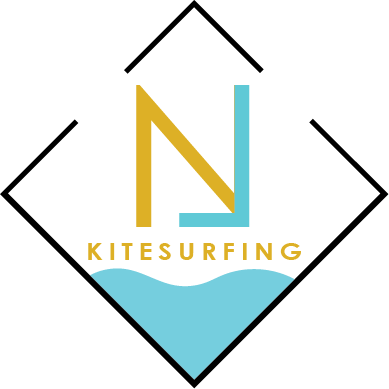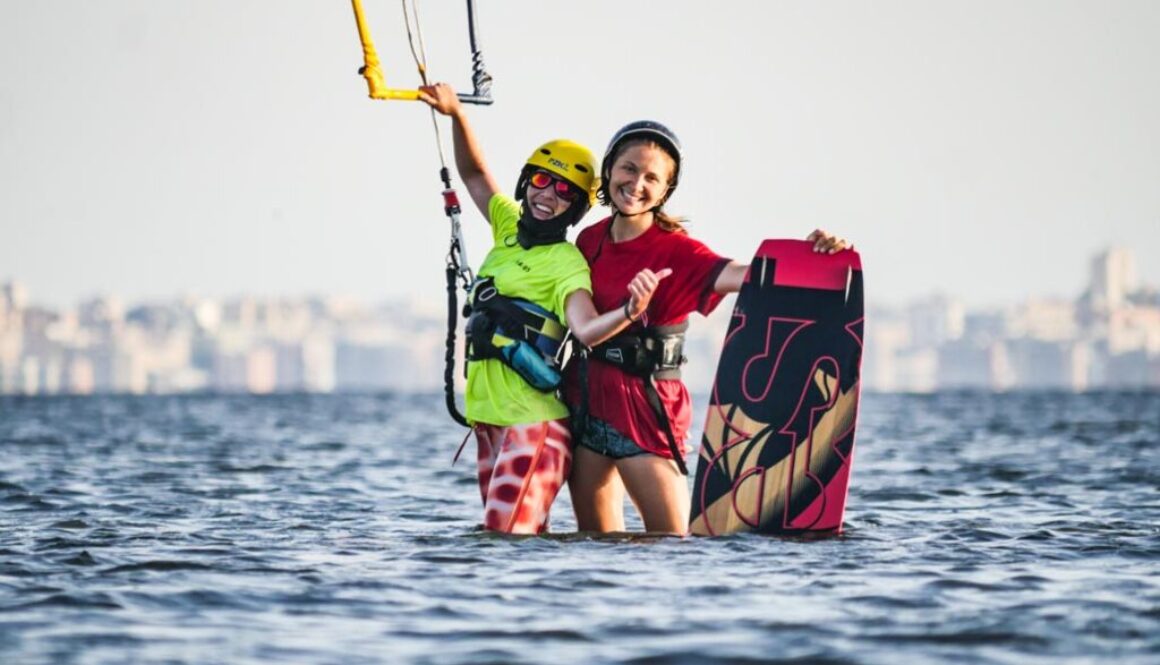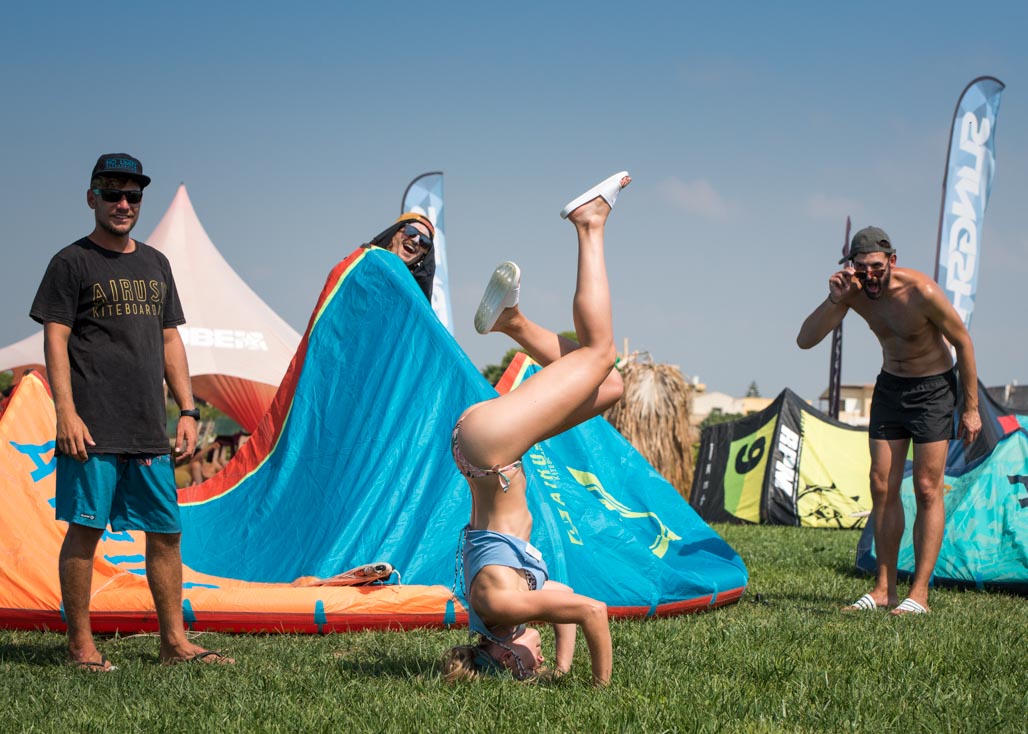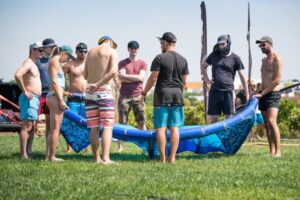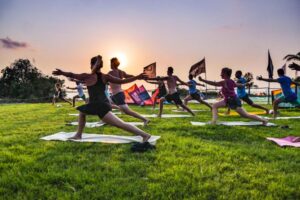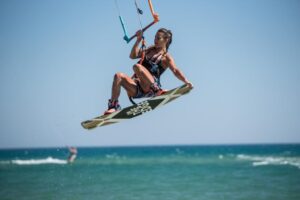KITESURFING FOR BEGINNERS
KITESURFING FOR BEGINNERS
WHERE TO LEARN KITESURFING BEST PLACE TO LEARN HOW TO KITE
KITESURFING FOR BEGINNERS
Where to learn Kitesurfing?
If you have found your way onto this website, it’s probably because you are playing with the idea of becoming a kitesurfer – great choice! You won’t regret it!
So you are thinking about becoming a kitesurfer, but not usre where to start? What school to choose, when is the best time to try the sport, or how to prepare for the sport? That’s great, this article is for you! Hopefully by the end of this article you will feel comfortable about the best location to go for you!
But before we go into the basics, let’s address the tiny whisper probably in the back of your mind – why should I learn how to kitesurf? That is super easy!
Kitesurfing is the fastest growing water sport this millenia, and for good reason. It will take you to the most stunning locations in the world, with a friendly, open-minded and supportive community. Besides, the wind whisking past you, in the warm water and sun on your skin is not only going to make you feel alive but your skin is going to thank you too! There is a phrase the kite-surfing community tends to throw around… “kitesurfing destroyed my life”. That is because once you get on the board, you will never go back to land! Imagine kiting out into the ocean to watch the sunset over the kenyan sand banks that stretch for miles and the forests peeping over the horizon. My girlfriend and I were the only ones on the water – the only ones getting to watch this incredible sunset. Kitesurfers are, honestly, the lucky ones.
Kitesurfing is gaining popularity, with people jumping as high as 15 storey buildings and performing mind-boggling tricks they look like gymnasts in the air. Even though tricks and jumps, with beautiful sceneries and incredible people are all in grasp, we have to remember that Kitesurfing is an extreme sport. It can cause serious damage, injury, and if not careful death.
But no worries! We are here to help you navigate through kitesurfing so that you can have fun, push your limits, whilst being safe to yourself and to everyone sharing the water.
AM I STRONG ENOUGH OR FIT ENOUGH TO KITESURF
You might be asking, “am I strong enough or fit enough to kitesurf?”. The answer is YES! This sport is for everyone! It all depends on where you learn. This sport is safe as long as you follow the rules. Imagine you have never been skiing or snowboarding before. Will you start your first lesson on a black slope (steep and very difficult?), or would you rather try your skiis on the flat and easy green slope first? The same is with kitesurfing. There are many kitesurfing spots all around the world. Some of them are more difficult than others.
What is a kitesurfing spot? And why one is easy and another is more difficult.
A kite spot is a specific part in the ocean, sea, lake (not recommended), lagoon (extremely recommended) where people practice kitesurfing. You can find typical freestyle spots, wave spots, choppy spots, or regular spots with variant conditions and characteristics.
Now you are probably asking yourself “which spot should I go to as a beginner?”
You should choose the easiest spot, preferably one that is:
– shallow so that you can stand up (knee to waist height)
– flat water
– not too cold
– no shore break (read: waves)
– no current
– no reef or obstacles
– no sea urchins (trust me!)
– stable wind up to 20 knots
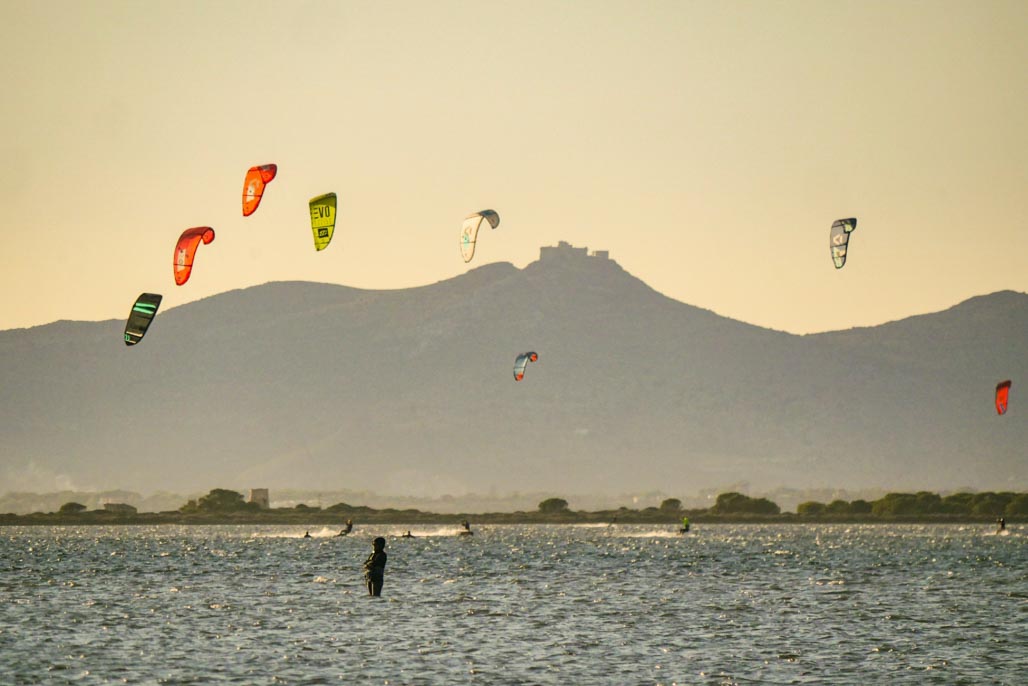
SHALLOW WATER IS THE KEY TO THE FAST AND SAFE PROGRESS
Why shallow water is better than deep water as a beginner:
Before you become an independent kitesurfer you will need some time to practise with a professional instructor. NEVER kite alone – this is one of the cardinal rules in kitesurfing.
How fast a beginner learns is completely dependent on the person, and you won’t know until you try! Some people need 10hours before they get on the board and some need 20hours. For instance, if you are a wakeboarder or snowboarder, or you have some experience with board-sports, then you will very likely progress faster. If you don’t have any experience with water sports or board-sports it’s not a problem, remember never give up!
You could learn in deep water, but believe me you will be grateful for learning in shallow water! (Just not too shallow! Remember, knee to waist height). I will explain below…
Your first lesson will likely be: theory, how to set up the kite, and kite control. Learning how to power the kite, and understanding how the wind works with it can always be a bit tricky at first, you will likely get pulled around with the harness attached to you, and drop the kite more than a few times. Being in the water whilst learning how to control the kite is 100% beneficial! It is safer, and if you get pulled along you won’t get injured.
There are a few kite surfing locations around the world that offer shallow, flat water – look out for lagoons. They are ideal to learn in. The biggest and best kite lagoon in Europe is called Lo Stagnone, in Sicily. Find out more HERE
If you learn on the spots with deep water, the drawback is that you will learn kite control on land, which is more dangerous. In the water you will be more happy to experiment, and therefore progress faster. You do not want to experiment on land!
Okaaayyyy kitesurfer! You have learnt how to control the kite! Great! Next step – body drags. Now it doesn’t sound glamorous, and it isn’t, but it is essential! Especially in deep water! After body drags comes the hardest part of your kite-surfing journey – water starts. It will be your first attempt getting on the board – exciting! But the first 50-100 attempts will result in crashes. When you crash, you will loose the board. In shallow water it is no big deal. Relaunch the kite, walk to your board, and try again. Your instructor will also be able to walk up to you and help out or give advice when needed. All these factors will lead to you learning a hell of a lot faster than…. dum dum dum…. deep water.
DEEP VS SHALLOW WATER:
When you crash, it will be downwind, so your board will very likely be upwind. In deep water, you will need to body drag upwind to regain the board, and generally it will be a lot harder to get the board back on with the current, chop or waves. This, unfortunately, means wasting precious time (and your money!), and energy.
When you are learning to ride on the board, the wind will pull you downwind (the art is to eventually go upwind, but it takes some practice!). When you go down wind, you will be moving pretty fast, and can be rather stressful. The perks of shallow water is you can stop, land the kite, and take a break if you need one. The downside of deep water is that you will always be pulled downwind no matter where you stop, because you cannot reach the ground to stop yourself. Once again, this will waste time and energy – also walking up the beach can sometimes feel like the walk of shame (but it definitely is not, because you’re learning a badass extreme sport!).
Overall, in shallow water you will have much more time to perfect techniques like waterstart or upwind riding. More times means more attempts during that vital one hour lesson, than in deepwater. All of these factors will enable you to learn faster. Remember, learning is all about repetition. More attempts equals greater chance of success.
FLAT VS WAVES?
Yes, waves are awesome. There may come a time in your kite story where you are addicted to surfing on the waves with your kite pulling you along, or using the waves as kickers to propel you into the air. But trust me, you do NOT want them at the beginning of your kite story. They are the enemy. They will swallow you up, and spit you right out, with probably a tangled kite.
Let’s go back to my ski example. Imagine that you are about to go for your first downhill run. Would you rather the clear, steady slope, or the steep slope with obstacles? If you don’t want to hurt yourself, or anyone else, then the widest and emptiest slopes are your friends!
The same is with kitesurfing. When you are about to put your board on, and learning how to water start, the last thing you want to be concerned about is your kite getting caught in the shore break. We don’t want any extra distractions or obstacles. You want to be focused on your main task – putting your board on and water starts. Waves will slow down your progress, cause unnecessary stress and draining. You would be fighting to survive instead of learning how to kitesurf.
No worries there will be time for wave riding in the future! No doubt you will love it too.
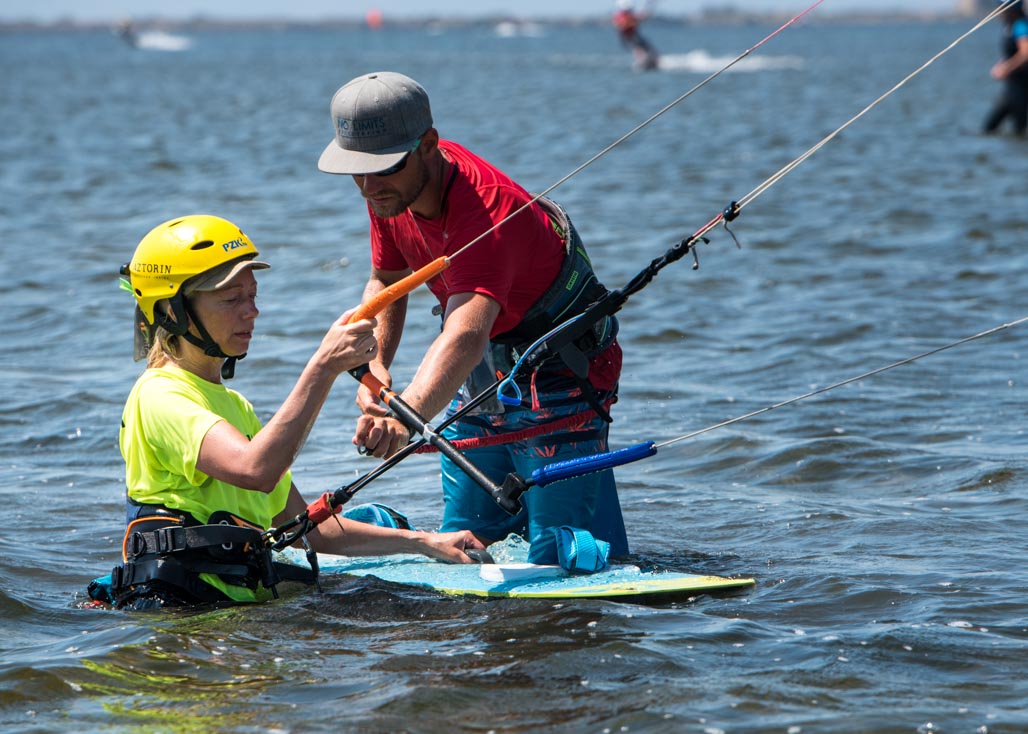
WHAT IS THE BEST WIND FOR KITESURFING
WINDY and WONDERFUL, right?
We can not kitesurf without wind. Fact. The wind is the fuel that powers our kites and keeps us from sinking! But the wind is changeable, on a day by day basis, as well as seasons carrying with it different directional or types of wind. Yup. There’s a lot of wind.
If you ask an independent kitesurfer what kind of wind conditions they prefer, they will likely say 25-35 knots. This is strong wind. And confident kitesurfers love to FLYYYY.
But at the beginning of your kite journey, strong wind is a challenge to handle. Similarly, low wind isn’t great either.
You need optimum medium wind strength to learn to kitesurf, preferably 11 – 25 knots. During low wind sessions you will learn how to handle a bigger kite, and with the stronger winds you will learn how to handle a smaller kite. Both are great for getting a feel for the wind and how different kite sizes work in them. But the best wind conditions for beginners will be between 13-20 knots. That’s the sweet spot.
The wind direction is very important too.
Try to choose a kite spot that has stable wind direction, preferably side-onshore wind. Avoid offshore wind direction if possible.
You probably noticed that there are smaller and bigger kites. The kite size you use will depend on the current wind conditions, your weight, and your skills.
80 kg man will be able to have lessons with wind 25 knots but not a
35-40 kg young kid.
Similarly, in low wind conditions a
55 kg lady will be able to ride,
but an
80-90 kg man may not.
There are a lot of factors to consider while kitesurfing. A certified instructor will be able to lead you, and teach you how to assess the wind conditions.
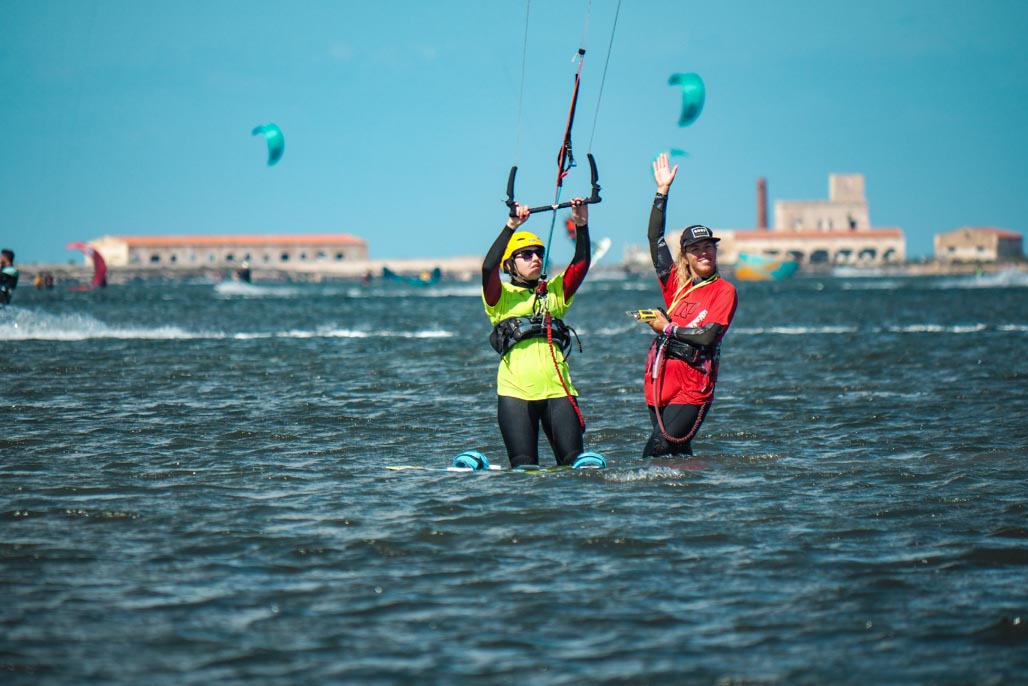
WHEN AND WHERE TO KITESURF
KITESURFING IN SICILY
In Sicily the wind is blowing all year long, but the best time to kitesurf is between May and the end of October. You will find more information about the kitesurfing spot in Sicily KITESURFING SICILY
In Tarifa the wind is most of the year. You will find there two wind directions. West and East. West is Poniente and East Levante. In winter time, there is more Poniente wind, in summer Levante.
Every kitesurfing spot has its own characteristic and wind periods.
In Brazil where are trade winds the best time for kitesurfing is from September until end of January.
In Kenya are two wind seasons Kaskazi (december – march) and Kuzi (May – August)
Before you make a decision where to go for kitesurfing make a good research about kitesurfing spot where you are planning to go.
KITESURFING SCHOOL, WHERE SHOULD I LEARN
KITESURFING SCHOOL, WHERE SHOULD I LEARN
Before you choose your kitesurfing school always check if the instructors are certificated and expiranced. You can also check reviews on google or trip advisor. Ask your school what kind of equipment they are using? If the kites are new or 5 years old. This makes huge differance.
Always choose the school with new or 1 season kites.
All of this you can find in No Limits Kitesurfing school in Sicily. New brand kites every season, Instructors with years of expirance, shallow and flat water. Sicily is the place where everyone can try and learn kitesurfing.

